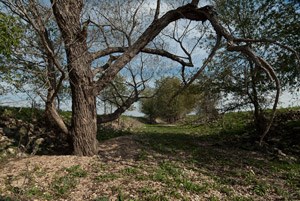
The San Xavier Missions (San Ildefonso, San Xavier, and Candelaria)
San Xavier Mission Complex Archeological District
Milam County, Texas
Coordinates: 29.317201, -98.450100
#TravelSpanishMissions
Discover Our Shared Heritage
Spanish Colonial Missions of the Southwest Travel Itinerary

Map by NPS.

Unknown artist, unknown date. Courtesy of Wikimedia Commons.

Photo by Christopher Talbot. Courtesy of NPS.
Plan Your Visit
San Xavier Archeological District is listed in the National Register of Historic Places and has a restricted location. For those who enjoy looking for historical markers, the commemorative Texas State Historical Marker for Mission San Francisco Xavier de Horcasitas is located on FM 908 eight miles west of Rockdale, TX. The marker for Mission San Ildefonso is on the north side of the river on FM 487 six miles east of San Gabriel, TX. Closer to San Gabriel, also on FM 487, is a State Historical Marker for Mission Nuestra Señora de la Candelaria del Cañón.
To learn about the Spanish colonial period in Texas, visit San Antonio Missions National Historical Park whose visitor center is located at 6701 San Jose Dr., San Antonio, TX. For more information, visit the National Park Service San Antonio Missions National Historical Park website or call 210-932-1001.
Last updated: April 15, 2016
